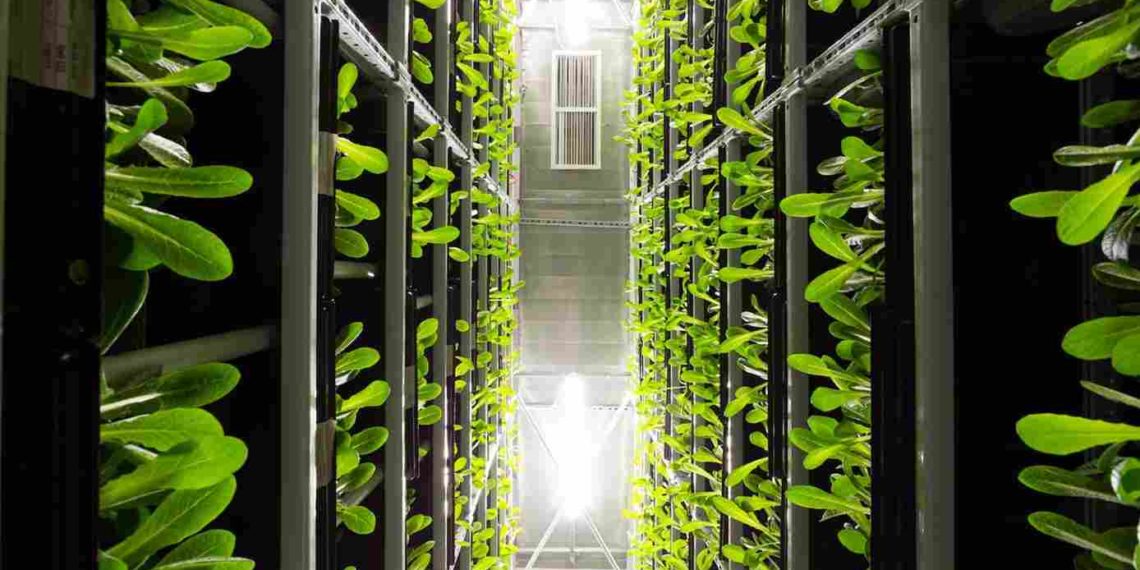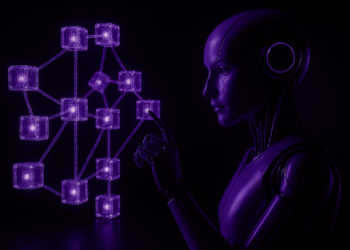Did you know developers could adjust their code to take part in the global effort to reduce the carbon footprint? Despite being dematerialised, the digital architecture is real and energy intensive. Taking into account the code’s environmental impact means anticipating high stakes and future CSR regulations from the very start of the IT architecture’s creation.
How to prepare for and raising awareness to this sustainable (r)evolution? To answer this question, we met two experts from Wemanity Agil’IT: Mohcine ATERHZAZ, Leader API, and Manaëlle PERCHET, Head of Impact & Sustainable Development.
1. Digital, but Energy Intensive
One thing is clear: The digital makes up for 4% of greenhouse gas emissions globally and 2.5% of the carbon footprint in France. In 2021, a report from the French Sénat’s information mission on the digital’s environmental footprint reveals greenhouse gas emissions produced by the digital could see an increase of over 60% by 2040 if the footprint doesn’t decrease, which would mean 6.7% of France’s overall greenhouse gas emissions.
It may be one of the biggest disenchantments of the 21st century. The digital, the one thing so perfect it seemed to answer all questions and bring hope for the future, pollutes – and not just a bit. How to explain this?
In addition to components whose recycling comes with difficulty, the blame is also put on the behind-the-scenes of the data industry, still relying too much on carbon: ‘’Nowadays, Chinese data centres consume energy in a mix made of 73% carbon, 23% renewable energies, and 4% nuclear energy,’’ we can read in the study by Greenpeace and the North China Electric Power University. Those reports make many actors on the market think, leading to the inclusion of ecodesign in their IT practices, like solutions to face digital pollution, and therefore decrease their IT system’s environmental impact by improving its design and realisation.
This trend is meant to be popularised in the coming years thanks to sustainable innovation, digital sustainability, and Green IT solutions.
2. Sustainable Innovation and Green IT
What is sustainable innovation?
Sustainable innovation brings intentional modifications to products, services, and processes of an entreprise in order to generate social and environmental advantages on the long term while also creating profit for the entreprise.
As suggested by economist John Elkington, our way of evaluating entreprise performances should be broadened, as it no longer relies only on profit at all costs. Instead of simply measuring its economic results, a lasting entreprise should also measure its contribution to social equity and its environmental impact. Those two new metaphoric bottom lines added to the economic one form The Triple Bottom Line, the new direction to set course for modern entreprises: ‘’People, Profit, and Planet.’’
The new definition of ‘’progress’’ must now always be seen with sustainable development. In order to do so, entreprises must minimise their resources to decrease their energy bills and greenhouse gas emissions. Nowadays, digital tech is not only an actor, but an accomplice. It can endorse a vital role to build a sustainable world, but this means taking into account its environmental impact and turning the standard IT architecture design into an ecodesign.
What is digital sustainability?
Digital sustainability is about changing the behaviour of all actors and consumers on the digital market in order to decrease energy consumption (and therefore, pollution) generated by the use of the internet and connected devices.
According from UN report, a third of global population doesn’t have access to the internet. However, 34 billion digital devices exist to connect to it, meaning there’s over 4 devices per person on earth. The production line is completely disconnected from actual needs, but ecodesign and a decrease in complexity within daily digital devices put a curb on planned obsolescence and digital overproduction.
Digital sustainability is a new approach towards our digital use to make it more respectful towards earth and its inhabitants. For a few years now, the issue has become more and more present as our tech consumption and dependency grew globally.
What is Green IT?
Green IT is following from sustainable innovation and digital sustainability in keeping with concrete solutions to make digital services more sustainable, energy-saving, and viable.
In the world, 33% of stored data are considered as redundant, obsolete, and trivial (ROT), 52% even unidentified (DARK), according to a Veritas study. Green IT is a way to fight against useless storage and technical debt to decrease greenhouse gas emissions in a consistent way.
Its actions aim to minimise the negative impact of IT systems on environment with the design, fabrication, exploitation, and elimination of IT products in an eco-friendly way.
The concept of Green IT is made of several stages for an entreprise:
- Green IT 1.0 aims to decrease the impact of IT on environment and the Information department’s budget with an eco-friendly approach.
- Green IT 1.5 serves as an extension of scale of Green IT 1.0 by using communication tools and intranet in a frugal way.
- Green IT 2.0 is the ultimate stage: Once the entreprise decreased the impact of existing solutions, it creates solutions to decrease it globally.
In addition to come with a concrete solution, Green IT also makes the digital market aware of alternative and eco-friendly solutions.
As time passes, consumers and entreprises become more aware of the digital revolution’s cost on energy, society, and environment. Millions of people can use
your application of millions of devices. Every little watt that you save can quickly have a huge impact. Wether you are web developers, IT architects, or infrastructure managers, you now know it’s possible to have impact at your scale.
Stepping up today for digital sustainability means creating ways and tools to head into a sustainable digital transformation tomorrow.
3. The Impact of Eco-Friendly IT Solutions
Communities in the IT field around the world started to focus closely on the role IT systems can play in the creation and reduction of attached environmental impacts.
Mostly, intentions behind the reduction of environmental impacts from IT systems are obviously ethical and moral, but those are not the only advantages.
Rise and shine
Many entreprises have come to learn that launching digital sustainability solutions not only helps meeting investors’ expectations, but also improving the corporate image of their organisation.
An entreprise that implements sustainable and eco-friendly solutions becomes more attractive to the public, consumers and labour market, who are more and more looking for certification labels sur France’s ‘’Numérique Responsable’’.
Talents love sustainability
Since 2018, 30,000 students have signed the Wake-Up Call on the Environment: A Student Manifesto. Among the authors of this publication, we can find students from French colleges HEC, Centrale Supélec, Polytechnique, and ENS. The message is clear: Tomorrow’s talents look for a sustainable future and refuse working with entreprises which don’t share that vision.
Save energy and money
When they implement initiative with a sustainable effect on environment like decreasing energy consumption, entreprises not only save money, but also use IT systems more efficiently. Stocking less data means decreasing the bills of energy, server maintenance, and storage. That’s why the reduction of the environmental footprint of IT is now a priority for many IT leaders.
4. How to Get a Diagnosis? Example for France
Public resources
In France, entreprises can first turn to a referential set by inter-ministry mission Green Tech and led by the DINUM (or Direction interministérielle du numérique), the Ministry of Ecological Transition, as wells as the ADEME and the INR (or Institut du Numérique Responsable). This document is accessible to everyone and aims to ‘’decrease consumption from IT and energy resources and their contribution to obsolescence of user devices, network devices, and servers.’’
Also in France, not unlike the Éco-Score which allows for a better comparison of the environmental impact of food products, there is the Ecoindex for a first-level automatic analysis of any given URL. It’s a community tool which is free to use and transparent, and helps revealing the technical and environmental footprint of a webpage or website with a score out of 100. A similar tool is the GreenIT-Analysis extension, which will give the same calculation as the Ecoindex for every page browsed in Chrome or Firefox.
Green IT Solutions
To go further, you can go for solutions designed for private and public organisations as well as regional collectivities to evaluate their level of digital sustainability. A good example is the Green IT collective, who recently partnered with Wemanity to provide a IT Benchmark offer for their clients to understand and act on their IT systems’ carbon footprints.
Our offer Wemanity Agil’IT takes environmental impacts into account during the design stage of our clients’ new IT architecture. The overall goal is for your entreprise to become more sustainable and be able to master your carbon footprint.
Since 2004, the Green IT Benchmark has assembled experts on digital sustainability, digital responsibility, digital ecodesign, and slow tech, and offered a unique follow-up in Europe to turn the digital into a lever for sustainable change and limit digital environmental impacts of entreprises.
In summary:
The digital makes up for 4% of greenhouse gas emissions globally, and 2.5% of the carbon footprint in France. Greenhouse gas emissions caused by digital activity could increase up to 60% by 2040.
Sustainable innovation brings intentional modifications to products, services, and processes of an entreprise in order to generate social and environmental advantages on the long term while also creating profit for the entreprise.
Green IT is an ongoing approach aiming for a reduction of the digital’s economic, social, and environmental footprint at every stage of the process, while still making it a lever for added value for your entreprise.
Mostly, intentions behind the reduction of environmental impacts from IT systems are obviously ethical and moral, but those are also environmental and economical..
Green IT is an ongoing approach aiming for a reduction of the digital’s economic, social, and environmental footprint at every stage of the process, while still making it a lever for added value for your entreprise. Wemanity accompanies their partners by offering to take part in the Green IT Benchmark 2022, a program allowing entreprises to measure, compare, and reduce their digital footprint in a sustainable way. We bring an actual support in three ways:
-Raising awareness of your employees on the digital’s environmental footprint
-Measuring the environmental impact of your IT, with LCA and reduction recommendations
-Training in Green IT, ecodesign, and digital accessibility with certification












